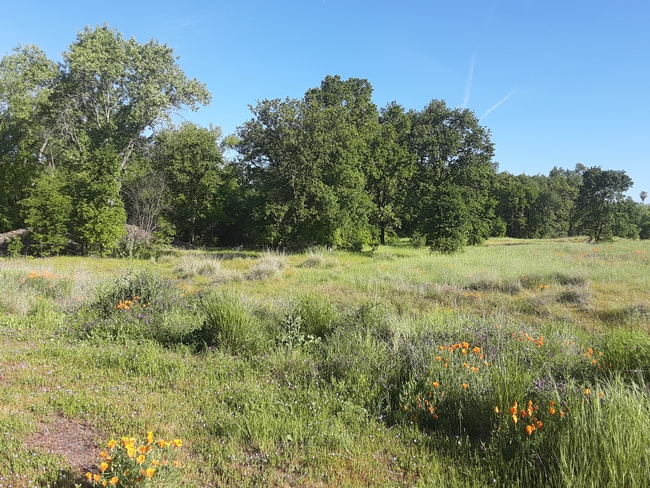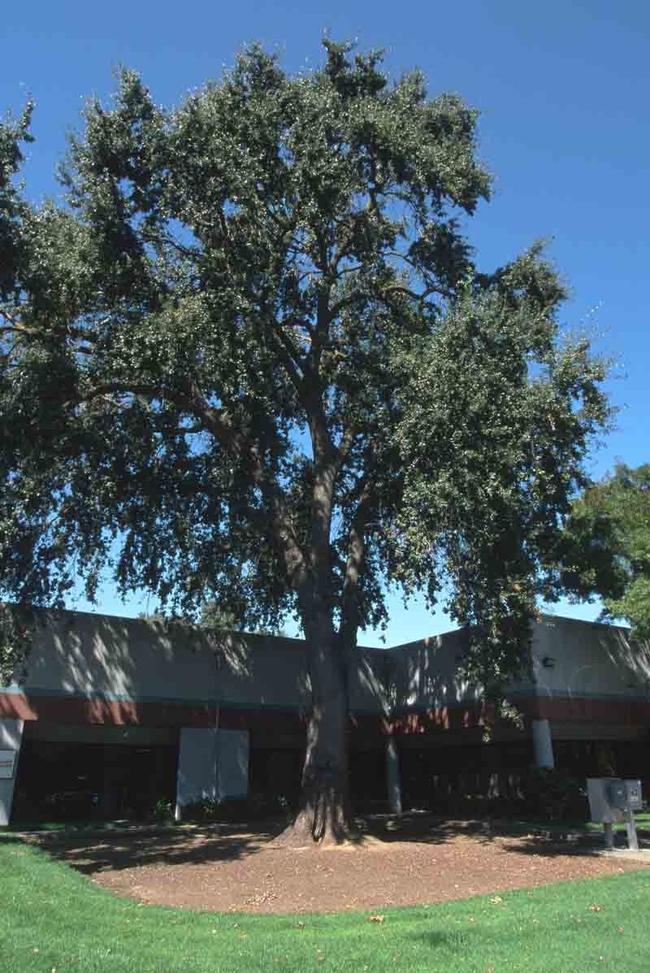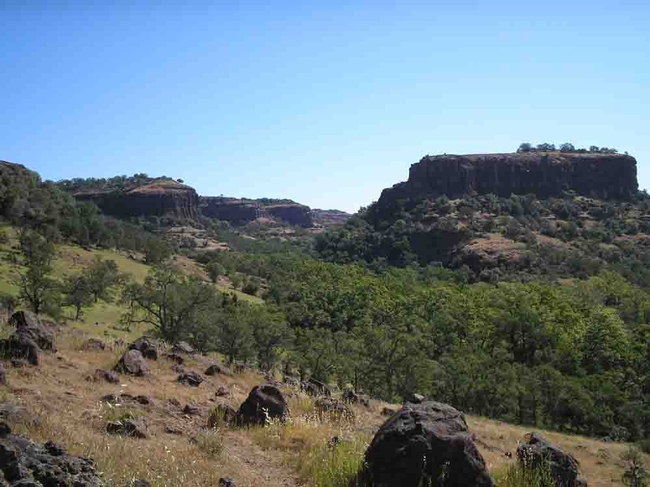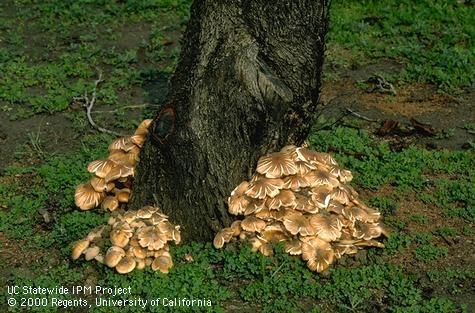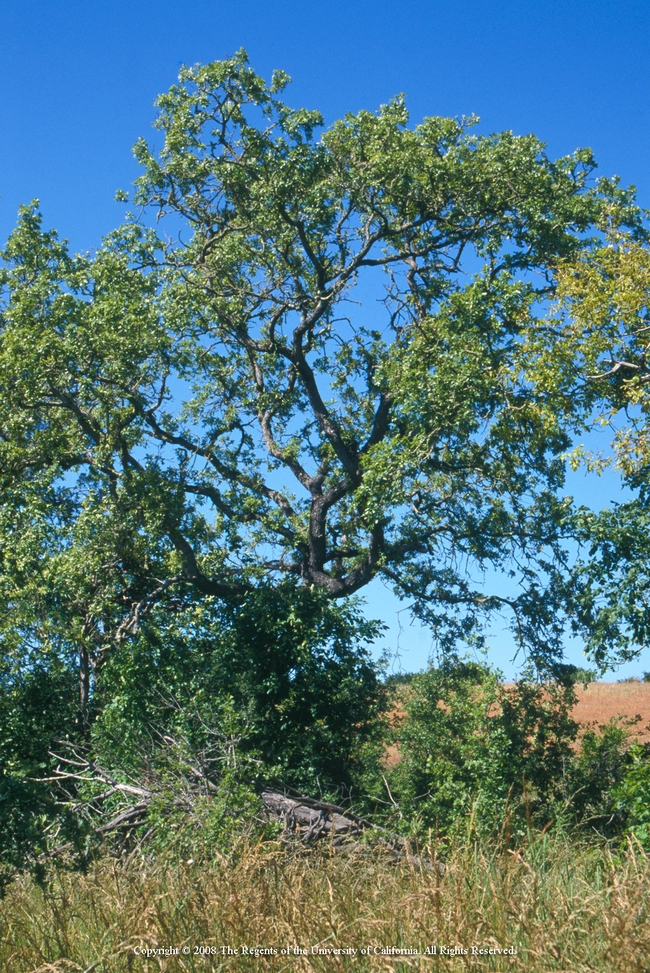No doubt you have seen many species of oaks living in wild areas of Northern California. But native oaks can also be attractive and beneficial additions to the home landscape.
Verbena Fields Oak Vista. Laura Lukes
Valley oak. Jack Kelly Clark, UC IPM Program
The key to living with oaks is to disturb them as little as possible. This is especially true of the root crown (the base of the trunk) and the root zone. The root zone of an oak tree covers an area one-third again larger than the outermost edge of the tree's foliage. Strive to keep this area as natural as possible.
The fungal disease “oak root rot” (Armillaria mellea) has evolved with California oaks. It is parasitic on oaks and other plant species, but if oaks are growing naturally in our moist winter/dry summer environment, this fungus is kept in check. However, if oaks are provided with summer irrigation in their root zone, Armillaria can become an aggressive, deadly pathogen. Do not water any plants under oaks during the summer: if they need watering, they do not belong there. Instead, native plants that are adapted to our Mediterranean climate can be grown under oaks. If winter rains are unusually low, a supplemental watering can be provided in the early spring. Do this by watering deeply in the outer two-thirds of the root zone.
Other threats to the root zone include soil compaction, paving, trenching, and changes in grade or drainage. If soil is mounded under an oak, the oxygen supply to the roots can be reduced, which can suffocate the tree. Oxygen exchange with the roots may also be reduced if the soil is compacted or covered with paving. Suffocation can also occur when drainage patterns are altered and the soil around an oak becomes saturated for extended periods. Excavating by grading or trenching can cut or damage roots. When enough roots are damaged, trees will die.
Blue oaks are thick along Dye Creek and atop Campo Seco. Laura Lukes
Mushrooms - symptom of Armillaria root rot (oak root fungus). Jack Kelly Clark. UC IPM.
Learn more about the many benefits native oaks provide to our local ecosystem: Attend our workshop, “Plant an Acorn; Harvest a Community” on Tuesday, November 7th. For descriptions of this and all the other workshops in the Master Gardeners' Fall Workshop Series, visit our website. All workshops are free, but registration is required.
UC Master Gardeners of Butte County are part of the University of California Cooperative Extension (UCCE) system. To learn more about us and our upcoming events, and for help with gardening in our area visit our website. If you have a gardening question or problem, email the Hotline at mgbutte@ucanr.edu or leave a phone message on our Hotline at 530-552-5812. To speak to a Master Gardener about a gardening issue, or to drop by the MG office during Hotline hours, see the most current information on our Ask Us section of our website.
